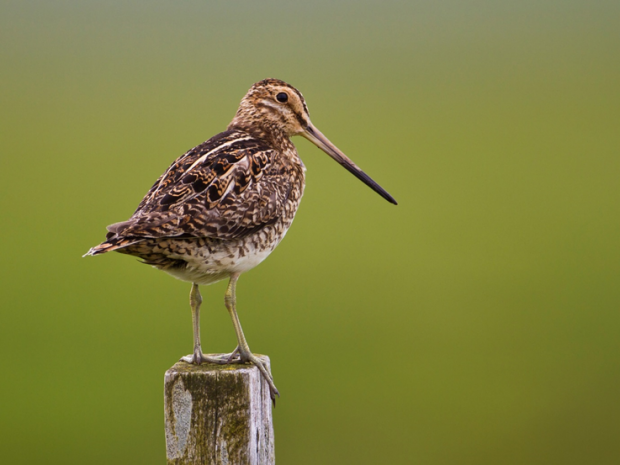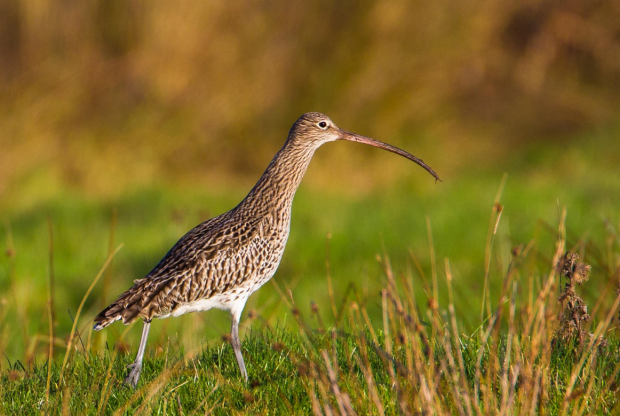A major new survey of the English uplands has highlighted just how important they are for some of our most cherished and rapidly declining farmland birds. Allan Drewitt, Senior Ornithologist, describes the results of the survey and offers some advice on managing farmland for breeding waders.
In 2016 Natural England commissioned a major survey of breeding birds, on behalf of Defra, covering over 500 tetrads (2x2 km squares) of upland ‘in-bye’ (farmland below and within 1 km of the moorland line) from Cornwall to Northumberland. For the first time we are able to show the outstanding importance of upland farms for grassland breeding waders, which have declined enormously in lowland areas. Around 50% of England’s breeding curlews, lapwings and snipe are found on upland farms, particularly in the Pennines of Derbyshire, Yorkshire and Durham, as well as the Bowland Fells and the North York Moors.
Despite this good news there is no room for complacency. Breeding curlews and lapwings, in particular, are declining in the uplands, as elsewhere in Britain. An analysis of historical survey data shows that curlew numbers are likely to have declined by over 40% in the uplands overall. In many areas the most important thing we can do to prevent further declines is to maintain and create the right kind of breeding habitat.

Habitat management for breeding waders
The survey also confirmed the long-held perception that breeding waders require open areas with good visibility, thus avoiding fields bounded by hedges and trees. They all prefer a varied sward, with tussocky and patchy grassland favoured over uniform vegetation. Curlews, in particular, prefer rough grazing while lapwings avoid silage and agriculturally-improved grass fields. All species are more abundant in waterlogged fields. Importantly, it also showed a positive relationship between breeding waders and land under Agri-Environment Scheme (AES) management.
Different species need different conditions, so no one field is likely to be ideal for all. Lapwings and redshank prefer shorter vegetation (less than 5 cm) over most of the field with patchy clumps of taller vegetation (10-15cm) over 20% of the field, and no more than 10% rush cover. Both require soggy or damp soil and some surface standing water (such as scrapes, gutters, foot drains, flushes, blocked grips or splash pools) with muddy edges. These wetland features are particularly important for successful chick-rearing. Lapwings need some scattered bare ground (e.g. mole hills, hoof prints) or farm-yard manure and a variety plants species help to camouflage eggs and chicks from predators. Light grazing during the breeding season, late summer hay cuts and rush cutting are all important.
Curlews prefer slightly taller vegetation, with scattered tussocks and clumps or patches of rush in a mosaic with open areas of shorter vegetation. Around half the field overall should be short, 20-30% of medium height (up to 15cm) and 20-30% tall (up to 50 cm), with scattered clumps/patches of rushes amongst open shorter vegetation. Again, soggy and damp ground conditions are important for foraging adults and chicks.
Snipe generally prefer fields with even more tall cover than curlew. A varied sward with 30-40% short (10-30cm) and 60-70% tussocks and rushes (50-80cm) is ideal. Some dead plant litter (10-20%) and up to 20-30% soggy ground or shallow standing water are also important.

Active management of uplands
All of this points to the importance of the continued management of upland areas for the conservation of important, priority species. Years of monitoring key species, and evaluating the impact of ways of farming on them, has led to a number of options being available under Countryside Stewardship for land manager to undertake to protect these species. A greater emphasis on environmental protection and funding for land managers to preserve wildlife outside the EU will provide further opportunities to see more of our iconic species protected for the future.
We know that farmers love to see wildlife on their land. They are prepared to make changes to the way they farm, whether by cutting the rush in late summer rather than earlier in the year, or by entering stewardship options that ensure grass swards are optimal for these species. What this research really shows is that farming and wildlife conservation can co-exist, rather than be at odds.
We know that cattle grazing, in particular, on upland grazing areas from late summer onwards will provide a suitable sward for nesting and feeding birds the following spring. Light stocking from April to July will maintain nesting cover and minimise trampling of eggs and chicks. Farmers and land managers should therefore be most heartened to know that traditional and sustainable management of the uplands is creating important habitats which allow our most iconic farmland species to thrive.
Links to further information: http://csguidance/options/uplands/UP2/Pages/default.aspx